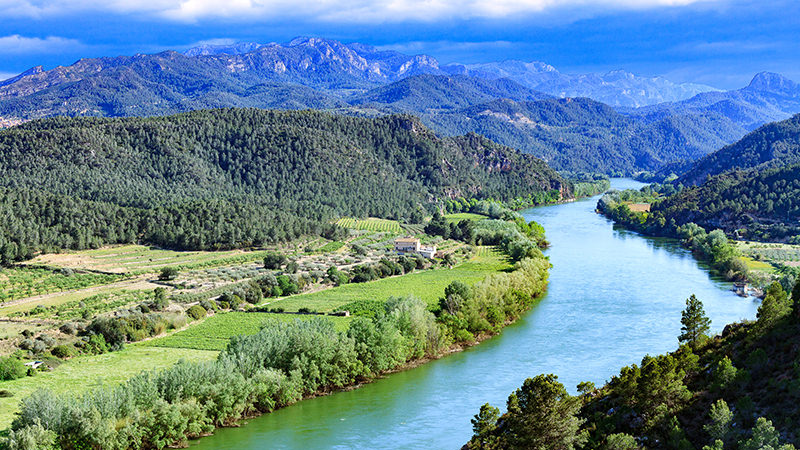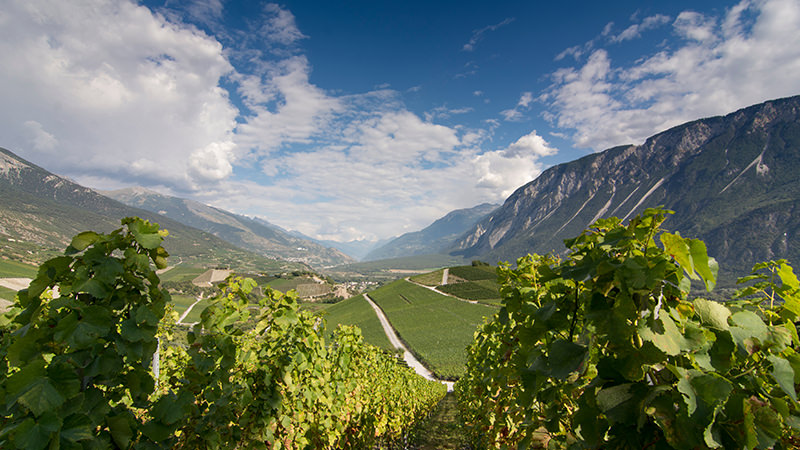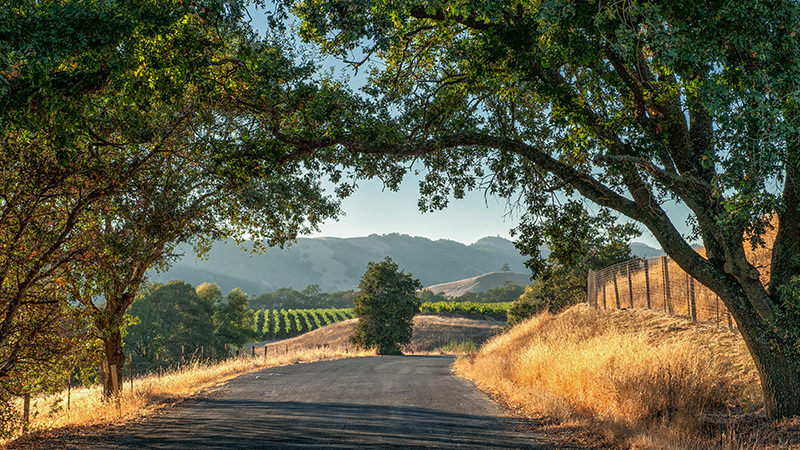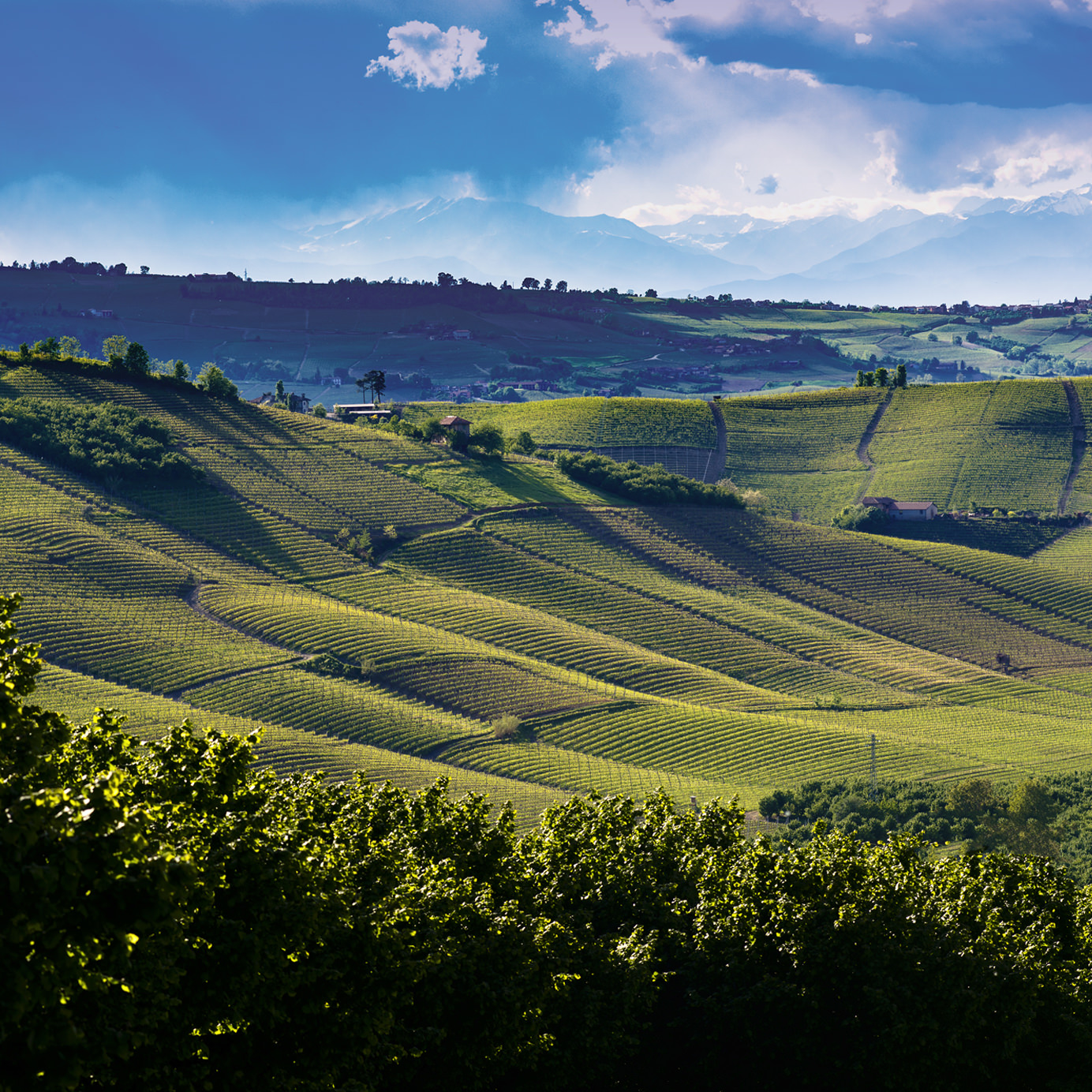Among the conversations that galvanize the global wine community (natural wine, sommelier certification), wind is an underdog. It’s considerably less sexy than the hot-button conversations headlining conferences and panels around the world.
But in the vineyard, wind is major. It can be the difference between dying vines and those that thrive. “During the early stages of vegetative growth, high winds can break off the new shoots, delaying and even reducing the amount of flowering,” Gregory Jones writes in Guild Somm. As a result, areas with very heavy winds will have lower yields and reduced quality.
The right amount of wind, and at the right time, is crucial. Evening winds can prevent radiation frost, a common threat that occurs as the previously sun-warmed earth loses heat and creates an inversion layer overnight. Some winemakers set up fans to prevent the warm air from hovering over the earth; those blessed with wind don’t need to install a frost fan system. Evening or early morning winds help prohibit fungal diseases such as mildew from growing on dew-dampened vines.
Wind is one of the reasons why islands and mountains, including volcanos, produce such great wine. Land-sea gusts moderate temperatures on otherwise hot coastal and island vineyards, while mountain-valley winds do the same for vines grown at elevation and on hills.
Across warm, dry vineyards, like many of those in Spain, California, Greece, and parts of France, regional breezes help viticulture thrive. In Germany or New York’s Finger Lakes, where baseline temperatures are cooler, unexpectedly robust winds can be detrimental. In hot Mediterranean climates, winds moderate high temperatures and let the grapes ripen slowly and surely, developing the complex molecules that deliver vibrant aromas and layered flavors in the bottle. These gusty air patterns change climates, blowing away clouds and drying out pockets of humidity that spell destruction to vines via mold and rot.
Weather patterns have played a role in farming and viticulture for millennia. Now the extremities of modern weather, including such devastating recent natural disasters as October’s wildfires in northern California, make understanding how wind affects winemaking more important than ever.
In celebrated winemaking regions of the world, certain winds garner celebrity (or notoriety), and there are even wines named after the iconic swirling winds of each region.

In northeastern Spain, a regional current known as the cierzo flows north by northwest out of the Pyrenees Mountains and through the Ebro River Valley (hello, Rioja!). The cierzo wind has been a feature of this mountainous, dry region for centuries. In fact, Cato described it in the 2nd century B.C. as “a wind that fills your mouth and tumbles wagons and armed men.” This powerful wind comes from the Bay of Biscay, the sea along Spain’s northern border, and rushes toward low pressure systems in the Mediterranean.
For Spain’s wines, the cierzo does a lot of good. Its gusts blow away bugs, humidity, and heat that would otherwise make the area incredibly difficult to farm. As a result of the cierzo, arid vineyards in Carinena, Calatayud, and Campo de Borja can produce gorgeous wines while using fewer chemical sprays and fertilizers than their neighbors.
Throughout northeastern Spain’s rocky, rugged D.O.s, the cierzo blows mainly through Garnacha vines trained low to the ground to avoid being blown over by gusts of 30 miles per hour or more. The winds give grapes a longer hang time on the vines to develop their signature bright, strawberry, and raspberry flavors.

The mistral is a French legacy. Created by the interplay of low and high pressure systems, the mistral travels at speeds that often exceed 40 miles per hour, qualifying as “gale force” by the National Weather Service. It can knock down vines, trees, and small dogs as it streams toward the Mediterranean from France’s northeastern border.
In addition to removing disease pressure like the cierzo, the mistral gives the Rhone Valley and southern appellations like Provence and even Roussillon their clear, cloud-free skies. Unlike Spanish vines, Rhone vineyards are trained straight up, with grapevines often tied to wooden stakes to avoid damage from the mistral. That sunshine ensures the Grenache, Syrah, and Mourvedre vines that dominate plantings in the region have adequate sunny hours to ripen into robust, chuggable reds and Provence’s signature rosés.

California’s wind patterns are mild compared to their European cousins, but add the same cooling benefits to the Golden State’s 100-degree summers. In California, cool Pacific winds blow up through the San Francisco Bay and Sacramento River delta, flowing into vineyards in Napa, Sonoma, and Lodi each afternoon.
Known affectionately as Delta Breezes, these winds create a large temperature shift between afternoon and evening (known in the biz as a diurnal shift). The cool air pushes heat out of leafy canopies, slowing the ripening process of grapes like Cabernet Sauvignon and Chardonnay. Additionally, Delta Breezes provide cool nights to retain the acidity that keeps wines — white, red, rosé, sparkling, you name it — refreshing.
*
Next time it gets windy, don’t curse Mother Nature. Whisper “thank you,” and pour yourself another glass of wine.
